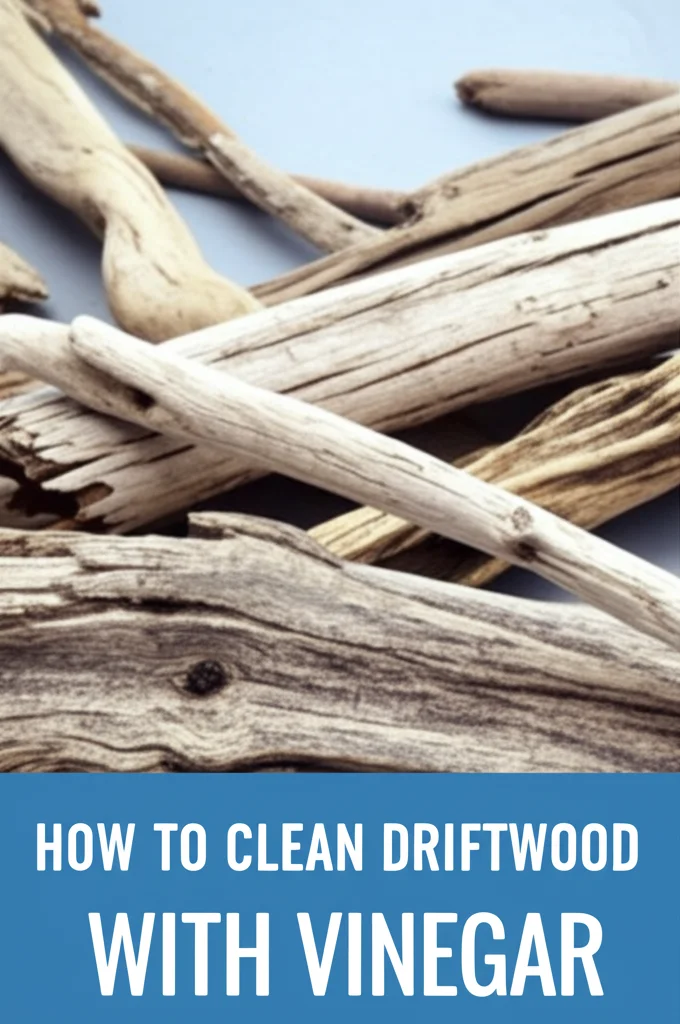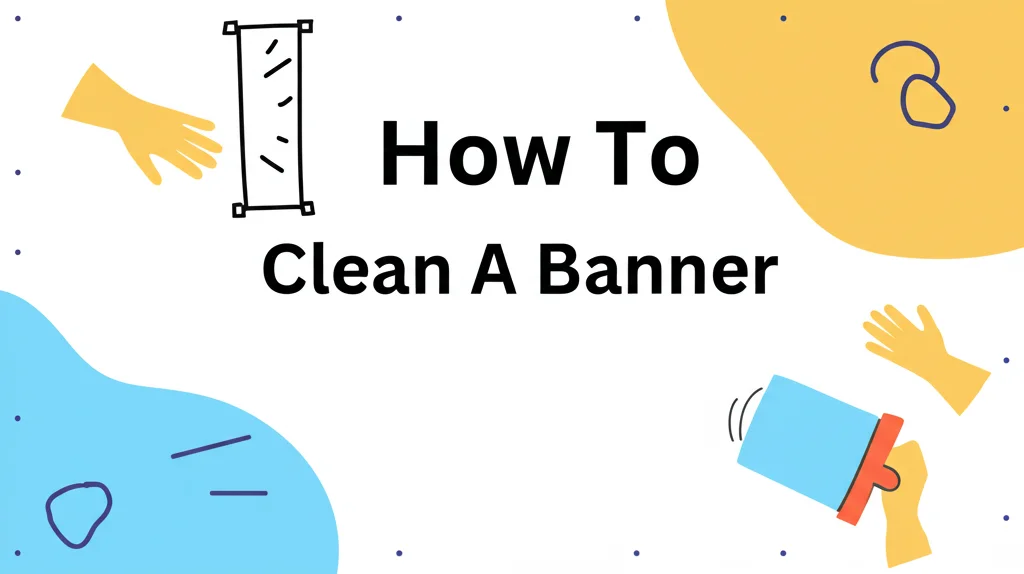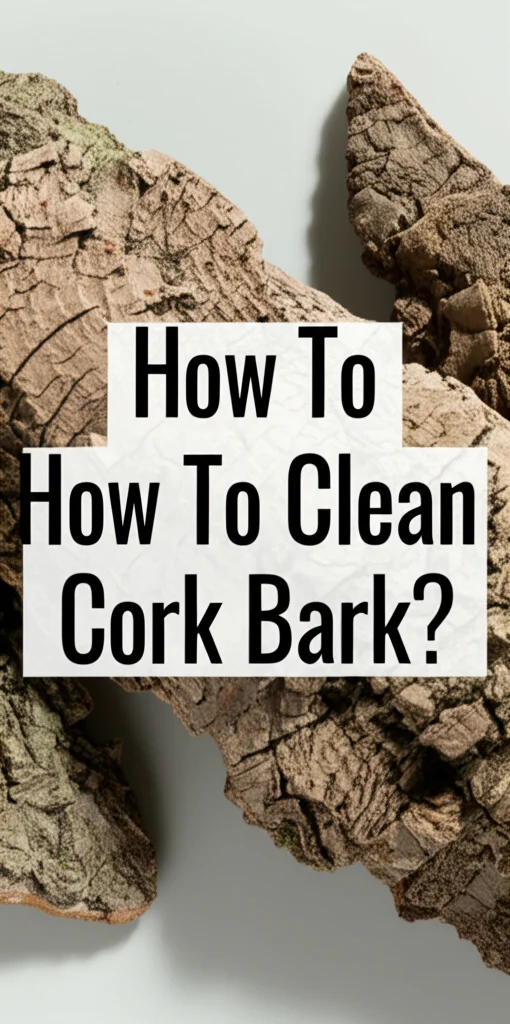· Home & Garden · 16 min read
How To Clean Large Artificial Flower Arrangements

Revive Your Blooms: How To Clean Large Artificial Flower Arrangements
Large artificial flower arrangements bring lasting beauty to any space. They add color and texture without the need for water or sunlight. Over time, these beautiful pieces collect dust, dirt, and even odors. This buildup dulls their appearance and makes them look tired. Knowing how to clean large artificial flower arrangements is important. You can bring back their original vibrancy and keep them looking fresh. This guide shares simple steps and effective methods. We will help you restore your faux florals, keeping them a bright spot in your home for years.
Takeaway
- Gather essential tools like soft brushes, microfiber cloths, and a vacuum.
- Start with dry cleaning methods to remove loose dust.
- Use wet cleaning for deeper dirt, applying gentle solutions.
- Address odors with natural absorbents like baking soda.
- Restore shape and vibrancy after cleaning with care.
- Maintain cleanliness with regular, light dusting to prevent heavy buildup.
To clean large artificial flower arrangements, first use dry methods like dusting or vacuuming to remove loose dirt. Then, spot-clean stubborn grime with a damp cloth and mild soap solution. Allow the arrangement to air dry completely. This restores its fresh look and extends its life.
Getting Ready: Essential Tools and Preparation for Cleaning Large Artificial Flowers
Cleaning large artificial flower arrangements begins with preparation. You need the right tools to do the job well. Having everything ready saves time and makes cleaning easier. It also helps prevent damage to your beautiful decor.
Gathering Your Cleaning Arsenal
Before you start, collect all necessary items. This ensures a smooth cleaning process. I like to lay out everything on a large, clean surface. This way, I know I have all my supplies at hand.
Here is a list of tools you will need:
- Soft-bristle brush: A makeup brush or a soft paintbrush works well.
- Microfiber cloths: These grab dust effectively and are gentle.
- Handheld vacuum with brush attachment: This is great for larger, sturdier arrangements.
- Compressed air can: Useful for intricate details and hard-to-reach spots.
- Spray bottle: For mixing and applying cleaning solutions.
- Mild dish soap: A small amount in water creates a gentle cleaner.
- Clean water: For rinsing or diluting solutions.
- Hair dryer: Set to cool or low, for quick drying.
- Old sheet or tarp: To protect your work area from dust and moisture.
Pre-Cleaning Inspection and Setup
Before cleaning, take a moment to inspect your arrangement. Look for any loose petals, leaves, or wires. If you find any, carefully reattach them or note them for repair later. This prevents further damage during the cleaning process.
Find a suitable workspace. A large table covered with an old sheet or tarp works best. This protects your furniture from dust and any liquid. If your arrangement is very large, you might need to clean it in sections or even in place. Consider its weight and stability. My goal is always to make the process as easy as possible without causing harm to the arrangement.
Careful preparation makes the actual cleaning much more effective. It also prevents any accidents or damage. Knowing your materials helps. Some artificial flowers use delicate silks, while others are plastic. Adjust your approach based on the material.
Dry Cleaning Methods: Tackling Surface Dust and Light Grime
Dry cleaning is the first step for most large artificial flower arrangements. It removes the top layer of dust and light grime without using water. This method is gentle and helps preserve the integrity of delicate materials. I always start here.
Gentle Dusting with Microfiber and Brushes
Start with a soft-bristle brush or a clean microfiber cloth. Gently brush or wipe each petal and leaf. Work from the top of the arrangement down. This makes sure dust falls away from already cleaned areas. For areas with intricate details, a soft makeup brush works wonders. It can get into small crevices. I use light, feathery strokes to avoid bending or creasing petals. Remember to clean the stems and the base as well. Dust collects everywhere.
For delicate silk or fabric flowers, a feather duster can also work. However, microfiber cloths trap dust better. Feather dusters often just move dust around. I find microfiber cloths much more effective for truly removing the dust. For general dust in a room, keeping areas like ceilings clean also helps reduce how much dust settles on your decor, including your beautiful arrangements. Learn more about how to clean a ceiling to maintain overall room cleanliness.
Vacuuming for Efficient Dust Removal
A handheld vacuum with a brush attachment is a powerful tool for large arrangements. Set the vacuum to its lowest suction setting. Gently hover the brush attachment over the flowers and leaves. The suction pulls the dust away without direct contact. This is especially good for arrangements with many small flowers or a dense design.
Be very careful not to let the vacuum directly touch the petals. The suction can be strong, even on a low setting. Hold it a few inches away. For extremely delicate flowers, you might want to cover the vacuum nozzle with a piece of pantyhose. This acts as a barrier, preventing small pieces from being sucked up. Using compressed air is another option for very difficult spots. It blows dust away from tight spaces. I use it for arrangements with lots of small berries or tightly packed leaves. Dry cleaning is usually enough for regular maintenance. For deeper dirt, you will need wet cleaning methods.
Wet Cleaning Techniques: Deeper Cleaning for Stubborn Dirt
Sometimes, dry dusting is not enough. Large artificial flower arrangements can accumulate stubborn dirt, grease, or sticky residues. When this happens, wet cleaning becomes necessary. This step requires more care. It delivers a much deeper clean.
Spot Cleaning and Gentle Wiping
For localized dirt or small stains, spot cleaning is effective. Mix a small amount of mild dish soap with warm water in a spray bottle. Shake it gently to combine. Spray a fine mist onto a clean microfiber cloth, not directly onto the flower. The cloth should be damp, not soaking wet.
Gently wipe the affected areas. Use a dabbing motion for stubborn spots. Avoid rubbing vigorously, as this can damage the material or spread the stain. For very delicate petals, you can even use a cotton swab dipped in the solution. This allows for precise cleaning. After wiping, use a second, clean, damp cloth (with plain water) to wipe away any soap residue. Leaving soap can attract more dirt later.
Prepping a Mild Cleaning Solution
For arrangements that need a more thorough wash, you can prepare a larger solution. Fill a basin with lukewarm water. Add a few drops of mild dish soap. Swish to create suds. If you prefer natural cleaners, a solution of water with a small amount of distilled white vinegar can also work. Vinegar is excellent for cutting grease and grime. You can find more cleaning ideas using how to clean with vinegar and baking soda.
For very large arrangements, full submersion is often not practical or recommended. It can damage the base or wires. Instead, you can carefully remove individual stems if the arrangement allows. Dip only the flower heads and leaves into the solution. Swish gently. Rinse immediately under cool, running water. Ensure all soap or vinegar residue is gone.
After cleaning, shake off excess water. Use a clean towel to gently blot the petals and leaves. Then, lay the individual pieces on a clean, dry towel or hang them to air dry completely. Using a hair dryer on a cool, low setting can speed up the drying process. Make sure flowers are completely dry before reassembling or placing them back. Any moisture left behind can lead to mildew or damage over time. Baking soda, often used with vinegar, can also be a helpful cleaner for tough spots, similar to how it works when you clean a shower with baking soda.
Odor Removal and Refreshing Your Large Faux Flowers
Artificial flowers can sometimes develop unpleasant odors. This happens from dust, cooking smells, or just being in a closed space for a long time. Getting rid of these smells is an important part of cleaning. It makes your arrangements truly fresh.
Tackling Lingering Smells with Natural Absorbents
The easiest way to remove odors is with baking soda. Baking soda is a natural odor absorber. I often use it for many household smells. You can place your entire large artificial flower arrangement into a large plastic bag. If the arrangement is too big, you might need to clean it in sections or find a very large container. Sprinkle a generous amount of baking soda over the flowers and leaves. Gently shake the bag or jostle the arrangement to coat as much surface as possible.
Seal the bag tightly. Leave the arrangement inside for several hours, or even overnight. The baking soda will absorb the odors. After the time passes, carefully remove the arrangement from the bag. Gently shake off the baking soda. You can also use a soft brush or a handheld vacuum (on low) to remove any remaining powder. This method is simple and highly effective.
Activated charcoal is another good option for absorbing odors. Place small sachets of activated charcoal near or within the arrangement’s base. It works similarly to baking soda but can be left out longer. For more intense odor issues, especially those that might suggest mildew, you might consider methods similar to how you would clean mold from a washing machine, but apply very diluted, gentle solutions to the faux flowers.
Adding a Fresh Scent
Once the odors are gone, you can add a pleasant scent. This step is optional but can enhance the refreshed feel of your flowers. I like using essential oils for this. Choose a light, floral, or fresh scent. Lavender, citrus, or even a light linen scent works well.
Do not apply essential oils directly to the petals. Oils can stain or damage the material. Instead, put a few drops onto a cotton ball. Tuck the cotton ball discreetly into the base of the arrangement. You can hide it among the leaves or in the vase. The scent will slowly diffuse. Replace the cotton ball every few weeks to keep the scent fresh.
Alternatively, you can use a fabric refresher spray. Make sure it is designed for delicate fabrics and test it on an inconspicuous area first. Spray lightly from a distance. The goal is to lightly scent, not to saturate the flowers. A refreshed scent brings the whole cleaning process to a satisfying close. Your large artificial flower arrangement will look and smell brand new.
Restoring Luster and Maintaining Vibrancy After Cleaning
Cleaning brings your large artificial flower arrangements back to life. But sometimes, they need a little extra touch to truly shine. Restoring their original luster and ensuring their long-term vibrancy makes all the difference. This step focuses on appearance.
Reshaping Petals and Leaves
During cleaning or just over time, petals and leaves can become bent or flattened. Gently reshape them with your fingers. Work slowly and carefully. You want to restore their natural curve and fullness. For silk or fabric flowers, a very light, cool steam from a garment steamer can help. Hold the steamer several inches away. Let the steam relax the fabric. Then, gently mold the petals into place. Do not let the flowers get wet from the steam.
For plastic or latex flowers, warm water can help reshape them. Dip the bent part into warm, not hot, water for a few seconds. The warmth makes the material pliable. Then, gently shape it. Hold it in the desired shape until it cools and sets. This trick works well for stubborn bends in stems too. My aim is always to make them look as realistic as possible.
Protecting Against Fading and Dust
Artificial flowers can fade over time, especially if placed in direct sunlight. UV protection sprays can help. These sprays create a clear barrier that blocks harmful UV rays. Look for sprays designed for crafts or outdoor fabrics. Always test the spray on a hidden part of the arrangement first. Ensure it does not leave a residue or change the color. Once you know it is safe, lightly mist the entire arrangement. Reapply every few months, especially for arrangements near windows.
To maintain vibrancy between deep cleans, consider where you place your arrangement. Keep it out of direct sunlight if possible. This helps prevent fading. Also, regular, light dusting prevents heavy buildup. A simple feather duster used once a week can make a big difference. This proactive care keeps your large artificial flower arrangements looking their best. It extends the time between major cleaning efforts.
Preventing Future Buildup: Proactive Care for Your Artificial Arrangements
Cleaning large artificial flower arrangements takes time. Preventing heavy dirt and dust buildup saves you effort in the long run. Proactive care is key to keeping your faux florals looking fresh for longer periods. Small habits can make a big difference.
Regular Light Dusting
The most effective way to prevent heavy buildup is regular, light dusting. Make it part of your routine. Once a week, or at least every two weeks, give your large arrangement a quick dust. Use a soft feather duster or a microfiber cloth. Gently sweep over the petals, leaves, and stems. This removes dust before it has a chance to stick or accumulate in thick layers.
For arrangements with many small, intricate details, a soft makeup brush works wonders. It can reach into tiny crevices that a duster might miss. Compressed air cans are also excellent for blowing away dust from hard-to-reach spots. I find that a quick dusting session takes only a few minutes. This prevents hours of deep cleaning later. Consistent small efforts keep the flowers looking vibrant all the time.
Strategic Placement and Seasonal Cleaning Schedules
Where you place your large artificial flower arrangement matters. Avoid placing it directly under air vents. Air vents blow dust and dirt directly onto your flowers. Also, keep arrangements away from high-traffic areas where they might get touched often. Direct sunlight can cause colors to fade over time. Try to place your arrangement in a spot with indirect light. This simple step helps preserve the color and vibrancy of your faux flowers.
Consider a seasonal cleaning schedule. For example, give your arrangement a deeper dry clean every three months. Do a more thorough wet clean twice a year. This might be in spring and fall. If you live in a dusty area or have pets, you might need to clean more often. During home renovations or painting, cover your arrangements with a sheet or plastic. This protects them from construction dust and paint splatters. Proactive care ensures your large artificial flower arrangements remain a beautiful focal point.
Specific Challenges: Handling Delicate Materials and Very Large Displays
Cleaning large artificial flower arrangements comes with unique challenges. Some materials are more delicate than others. Very large displays can be hard to move or clean in one piece. Understanding these challenges helps you approach the task correctly.
Cleaning Delicate and Specialty Materials
Not all artificial flowers are made the same. Some are crafted from delicate silks, hand-painted fabrics, or even dried natural elements. These materials need extra care. For silk or fabric flowers, avoid excessive rubbing or soaking. Water can sometimes warp the fabric or cause dyes to run. Stick to dry dusting with a very soft brush for these. If you must wet clean, use a barely damp cloth and blot gently.
Flowers with hand-painted details or glitter also require a gentle touch. Rubbing can remove the paint or glitter. For these, I rely heavily on compressed air or a soft brush to puff away dust. Full submersion is usually not an option. If mold or mildew is a concern on natural elements, extremely diluted solutions might be used, similar to how one might approach cleaning problematic areas with natural agents. However, always test a hidden spot first to prevent damage.
Strategies for Very Large or Immovable Arrangements
Some artificial flower arrangements are simply too big to move. They might be permanently installed or very heavy. In such cases, you clean them in place. This means you need to protect the surrounding area. Lay down old sheets or tarps to catch dust and drips.
You might need a step ladder or a sturdy stool to reach high parts of the arrangement. Work from top to bottom. For dry cleaning, use an extendable duster or a vacuum cleaner with a long hose and brush attachment. For wet cleaning, use a spray bottle to lightly mist a clean cloth. Then, wipe carefully. Avoid spraying directly onto the arrangement if it’s too large to move and dry completely. My personal experience teaches me that patience is key here. Take breaks if needed. Breaking the task into smaller, manageable sections also helps. This approach ensures a thorough clean without risking damage or personal injury.
FAQ Section
Q1: How often should I clean large artificial flowers?
Clean large artificial flowers lightly every 1-2 weeks with a duster or vacuum. Perform a deeper dry clean every 3 months. A thorough wet clean is good twice a year. Adjust this schedule if you live in a dusty area or have pets.
Q2: Can I wash artificial flowers in the washing machine?
No, do not wash artificial flowers in a washing machine. The machine’s agitation can damage delicate petals, bend wires, or cause colors to bleed. Hand cleaning is always the safest method to preserve their shape and appearance.
Q3: What if my artificial flowers have a strong, musty smell?
To remove musty smells, place the arrangement in a large bag with baking soda overnight. The baking soda absorbs odors. Alternatively, tuck a small sachet of activated charcoal into the base. Ensure the flowers are dry to prevent mold growth.
Q4: How do I clean very delicate artificial flowers?
For very delicate artificial flowers, use only dry cleaning methods. Gently brush dust away with a soft makeup brush or use compressed air. Avoid water or harsh chemicals. These can damage materials like silk or hand-painted surfaces.
Q5: Can I use harsh chemicals on fake flowers?
No, avoid harsh chemicals or abrasive cleaners on artificial flowers. They can strip colors, dissolve glues, or damage materials. Stick to mild soap and water or natural solutions like vinegar for wet cleaning. Always test on a hidden spot first.
Q6: Do artificial flowers fade in sunlight?
Yes, artificial flowers can fade in direct sunlight over time. UV rays break down dyes and materials. Place your arrangements in areas with indirect light. You can also use a UV-protective spray designed for crafts to help prevent fading.
Conclusion
Cleaning large artificial flower arrangements might seem like a big job. However, with the right tools and methods, it is a straightforward process. You can easily bring back their original beauty. Regular dusting and occasional deeper cleaning extend the life of your faux florals. This ensures they remain a vibrant part of your home decor.
We covered simple dry cleaning for light dust. We also explored gentle wet cleaning for stubborn grime. You learned how to tackle odors and protect your arrangements from future damage. Remember, proactive care saves time and effort. It also keeps your investments looking their best.
Do not let dull, dusty flowers detract from your space. Take action today. Apply these tips to clean large artificial flower arrangements. Enjoy the lasting beauty of your refreshed blooms. A little effort goes a long way in maintaining their charm.
- artificial flowers
- cleaning tips
- home decor
- faux florals
- flower care
- dust removal
- large arrangements




